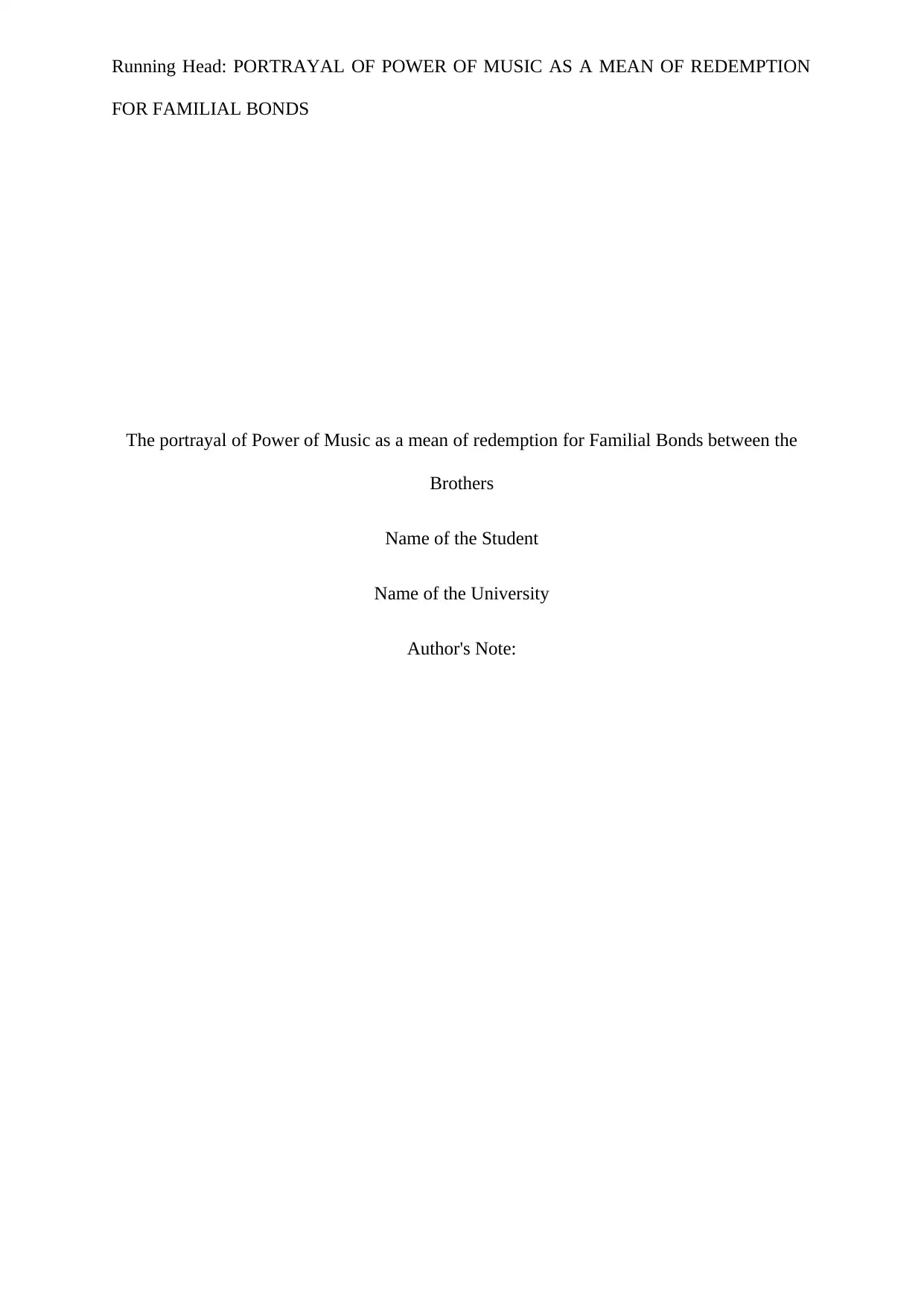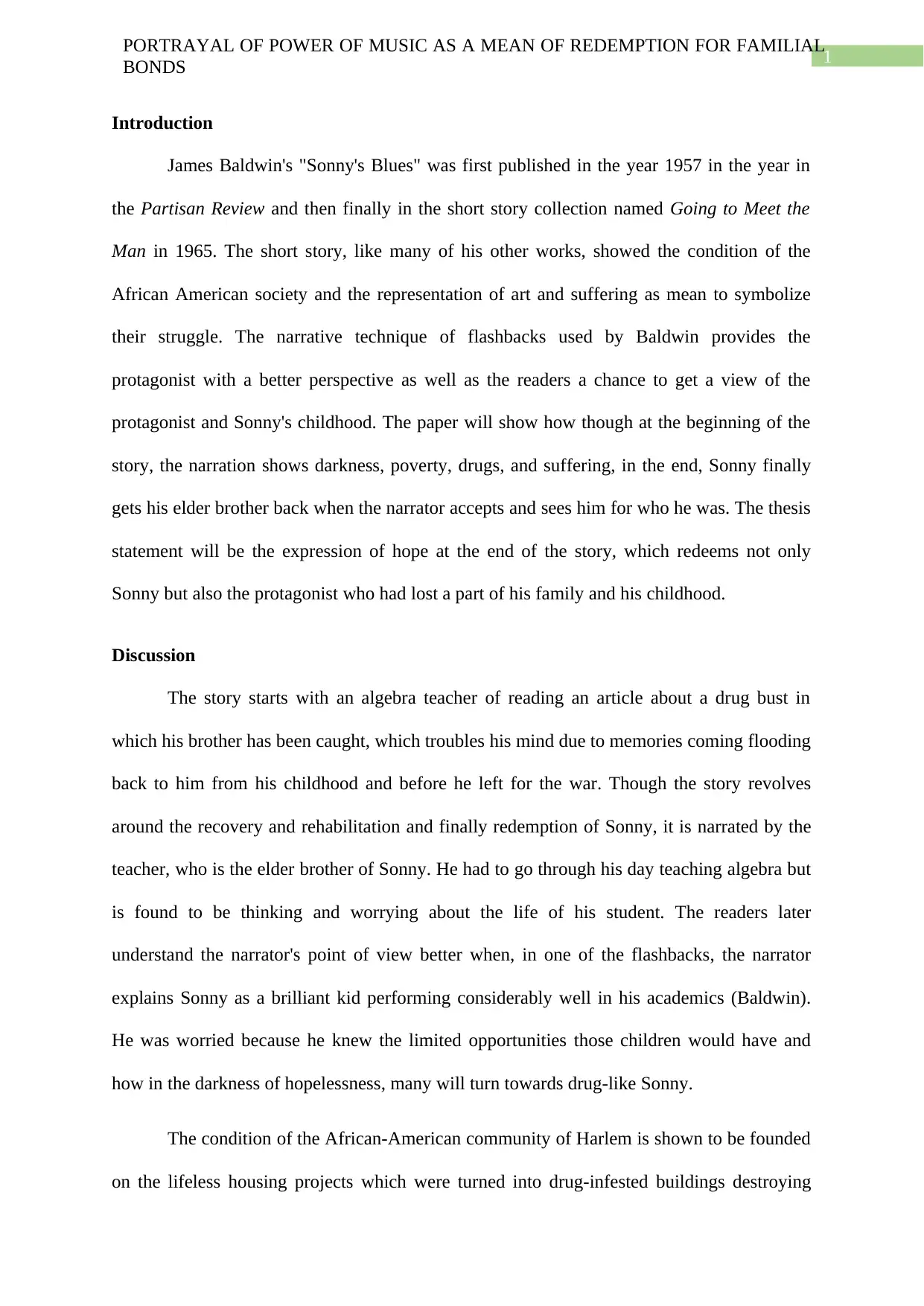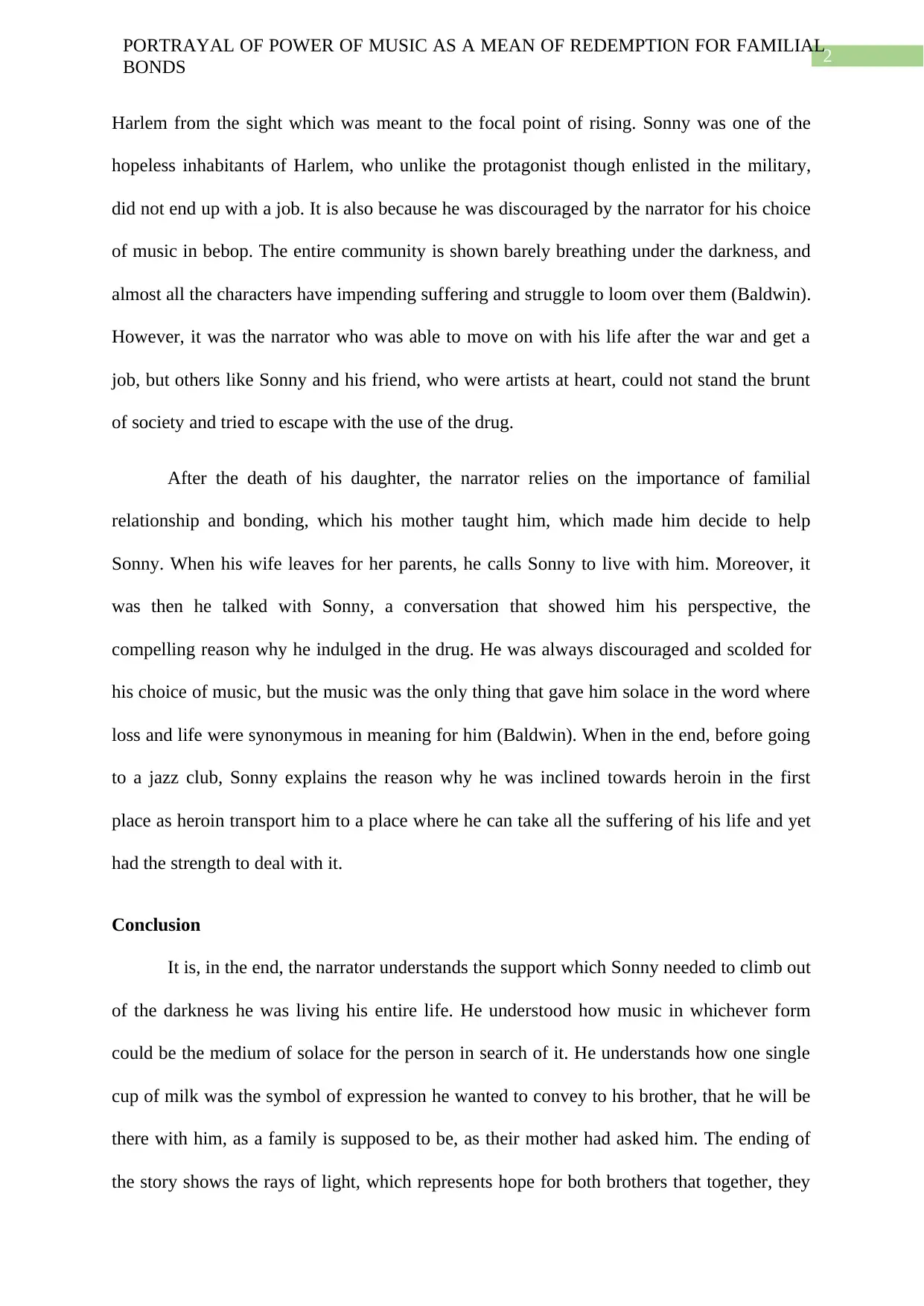Portrayal of Music's Power in Redeeming Familial Bonds: Sonny's Blues
VerifiedAdded on 2022/09/01
|5
|947
|29
Essay
AI Summary
This essay provides an analysis of James Baldwin's 'Sonny's Blues', focusing on the portrayal of music as a means of redemption for familial bonds. The essay examines the narrative structure, the characters' struggles, and the themes of hope and reconciliation. It explores how the protagonist's understanding of his brother Sonny's passion for music ultimately bridges the gap between them, leading to a sense of familial connection. The essay highlights the significance of music as a source of solace and a pathway to understanding, particularly within the context of the African American experience in Harlem. Through detailed textual analysis, the essay demonstrates how Baldwin uses the power of music to symbolize the brothers' journey towards healing and redemption, ultimately emphasizing the importance of familial support and understanding in overcoming adversity. The conclusion emphasizes the ray of light, which represents hope for both brothers that together, they would find their way back home.
1 out of 5








![[object Object]](/_next/static/media/star-bottom.7253800d.svg)